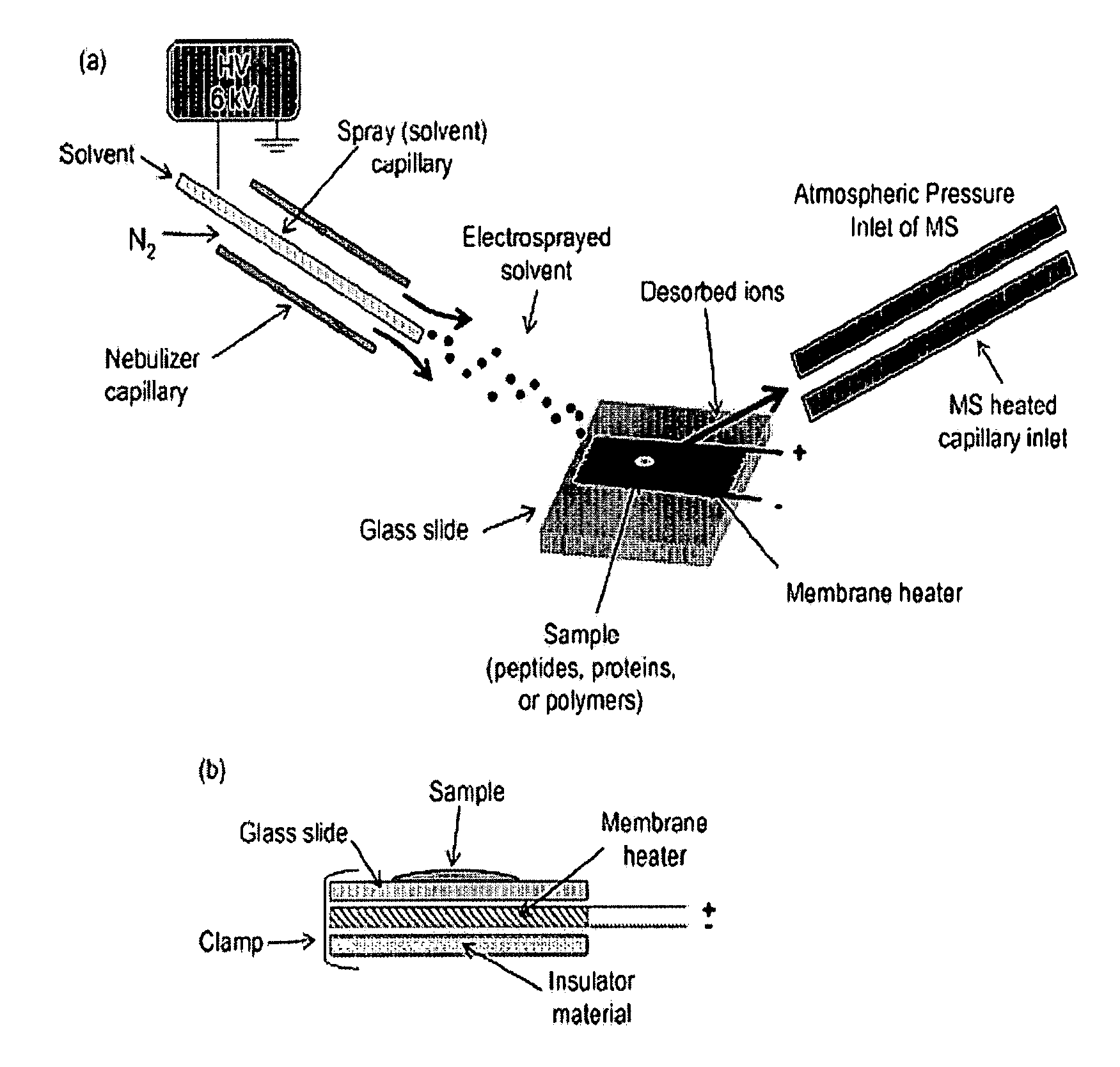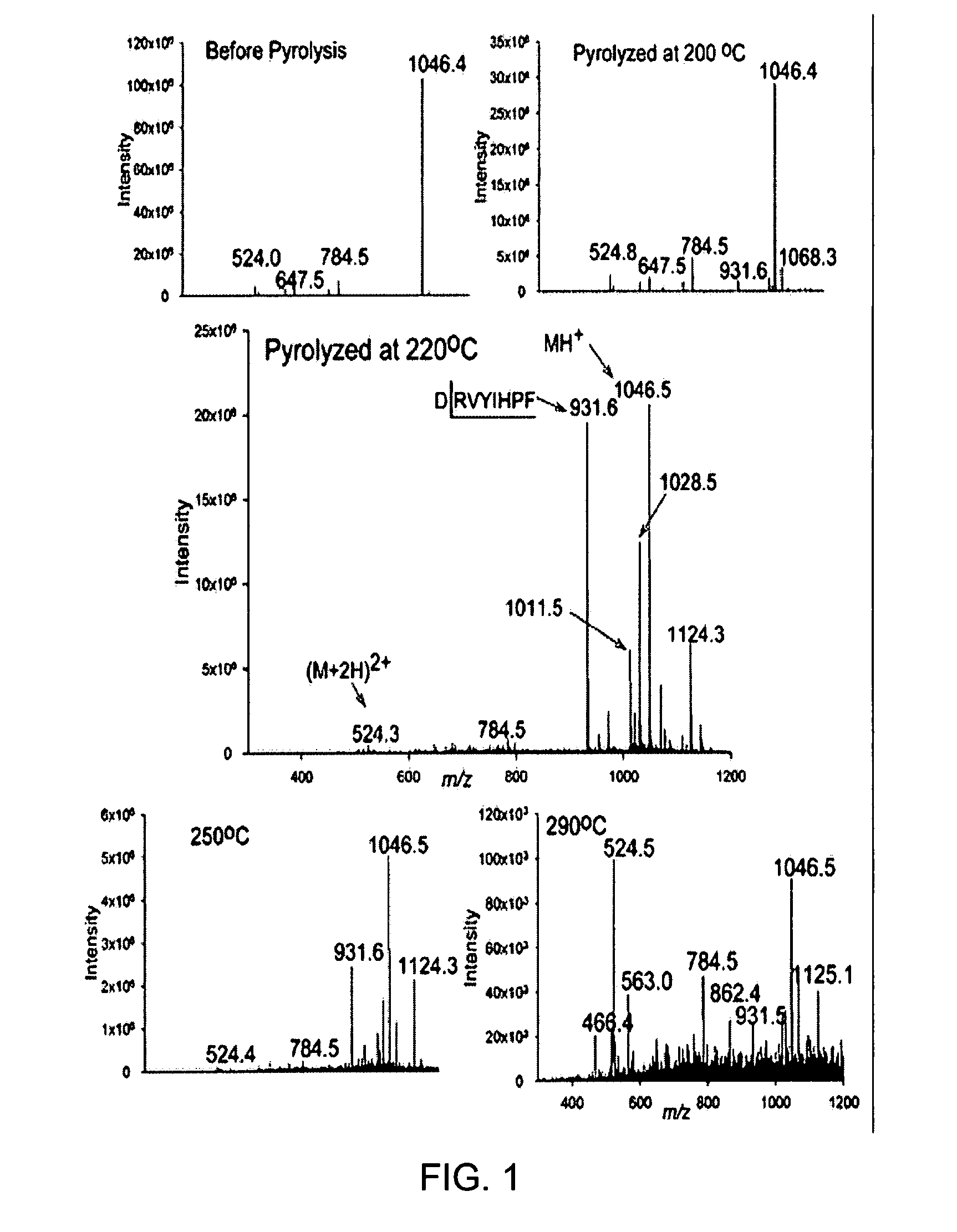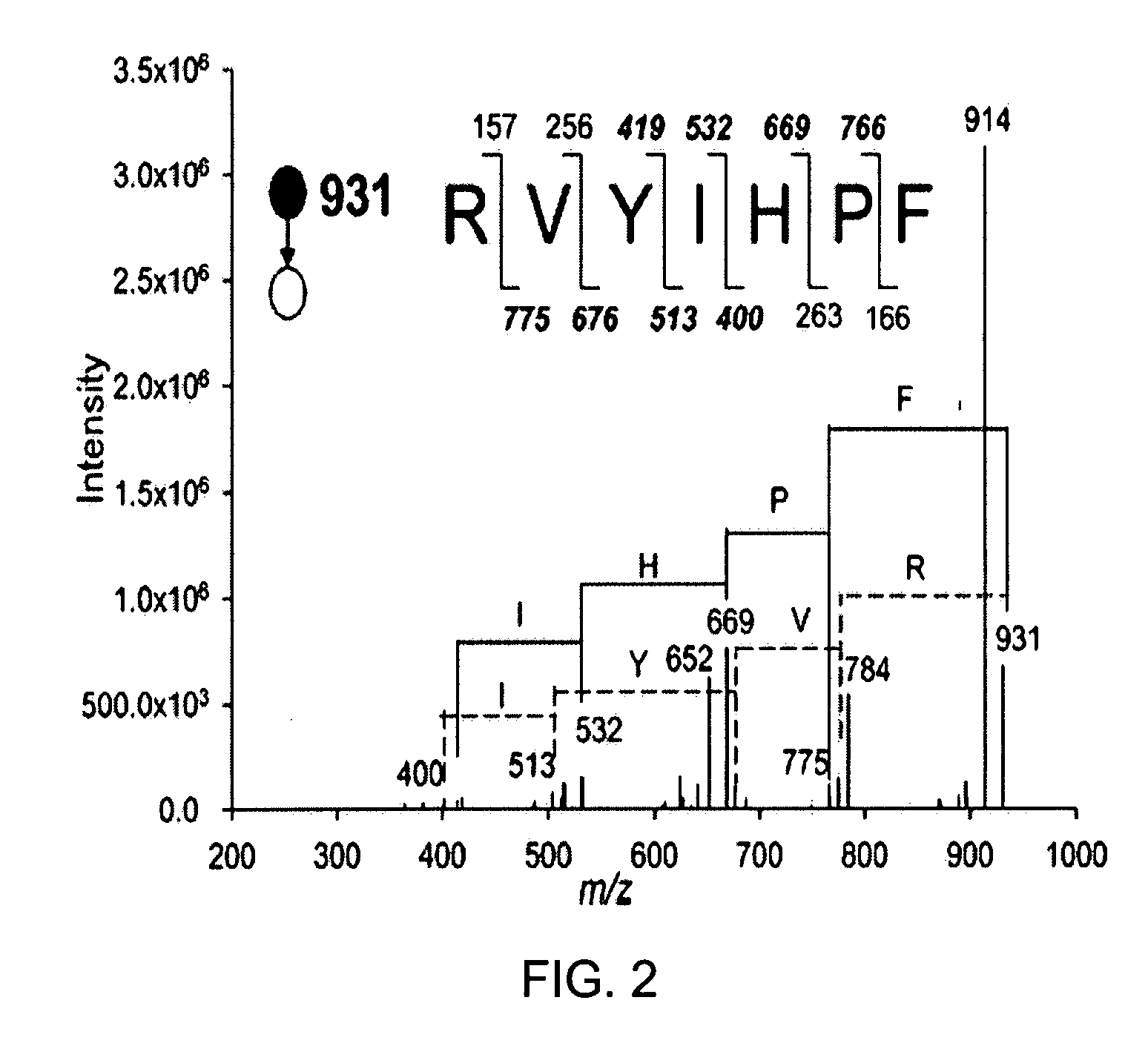Method and Apparatus for Pyrolysis-Induced Cleavage in Peptides and Proteins
a pyrolysis and peptide technology, applied in the direction of peptide/protein ingredients, instruments, separation processes, etc., can solve the problems of enzymatic digestion approaches that are not particularly suited to proteins lacking arginine and/or lysine amino acids or non-soluble proteins, requiring and rely on relatively slow enzymatic activity or require time-consuming or laborious procedures. , to achieve the effect of low chemical noise, fast speed
- Summary
- Abstract
- Description
- Claims
- Application Information
AI Technical Summary
Benefits of technology
Problems solved by technology
Method used
Image
Examples
example 1
Pyrolysis-Induced Cleavage at Aspartic Acid Residue in Peptides and Proteins
[0026]Chemicals. Peptides used were: (A) Angiotensin II, human, DRVYIHPF; (B) VIP (1-12) peptide, HSDAVFTDNYTR; and (C) VSV-G peptide, YTDIEMNRLGK (all from AnaSpec, San Jose, Calif.). Lysozyme protein (from Sigma-Aldrich, St. Louis, Mo.) was used without further purification. All solvents used for sample preparation and MS measurements were HPLC grade (Burdick & Jackson, Muskegon, Mich.), and the formic acid (96%) was ACS Reagent grade (Aldrich, St. Louis, Mo.).
[0027]Pyrolyzer Design and Pyrolysis Procedure. Approximately a 1 mg solid sample of peptide or protein was pyrolyzed under ambient conditions. Samples were placed in a glass tube (length 31 mm and internal diameter 4 mm; Agilent, Santa Clara, Calif., Part # 5180-0841) and heated using a resistance heating wire (Omega, Stamford, Conn., nickel-chromium wire, part # N160-015-50, length 20 cm) enwound around the tube, powered by 13 V alternating current...
example 2
Pyrolysis Device and Procedures
[0038]A diagram of the on-probe pyrolyzer interfaced to the DESI source is shown in FIG. 6. A homebuilt DESI source was interfaced with a quadrupole ion trap MS (LCQ Classic, Thermo Electron, San Jose, Calif.) and was operated in the positive ion mode. The on-probe pyrolyzer consisted of a membrane heater (Model #HM6815, Minco, Minneapolis, Minn.) placed underneath a removable glass slide held tightly together with a clamp (FIG. 6b). The sample to be pyrolyzed was placed directly on the center of the glass slide. The membrane heater was powered by alternating current (AC) from a transformer (Model #3PN116C, Superior Electric, Farmington, Conn.) and heating and final pyrolysis temperature were controlled by adjusting the voltage of the transformer and the heating time. For our current setup, a voltage of 20 V applied for 11 s resulted in a final pyrolysis temperature of 220° C. These values for pyrolysis temperature and time were used for all biological...
example 3
On-probe Pyrolysis DESI-MS Analysis of Biomolecules
[0043]As described in Example 1, the site-specific pyrolysis-induced cleavage at the amino acid aspartic acid (letter symbol “D”) in both peptides and proteins has been achieved by heating samples to a temperature of 220-250° C. for 10 s under atmospheric pressure conditions. Peptides and proteins in this previous study were pyrolyzed in an open-ended tube furnace, extracted with a suitable solvent and analyzed by ESI-MS and MS / MS to characterize and identify non-volatile pyrolysis cleavage products. In this Example, the same samples were pyrolyzed on-probe and products were analyzed in situ by DESI-MS, bypassing the sample extraction, transfer, and ESIinfusion steps. In the ESI-MS study and the DESI-MS study here described, pyrolysis of peptides and proteins above 300° C. produced complete charring of the polypeptide backbone.
[0044]Pyrolysis induced site-specific cleavage at aspartic acid has was observed mostly at low temperature ...
PUM
| Property | Measurement | Unit |
|---|---|---|
| Temperature | aaaaa | aaaaa |
| Temperature | aaaaa | aaaaa |
| Temperature | aaaaa | aaaaa |
Abstract
Description
Claims
Application Information
 Login to View More
Login to View More - R&D
- Intellectual Property
- Life Sciences
- Materials
- Tech Scout
- Unparalleled Data Quality
- Higher Quality Content
- 60% Fewer Hallucinations
Browse by: Latest US Patents, China's latest patents, Technical Efficacy Thesaurus, Application Domain, Technology Topic, Popular Technical Reports.
© 2025 PatSnap. All rights reserved.Legal|Privacy policy|Modern Slavery Act Transparency Statement|Sitemap|About US| Contact US: help@patsnap.com



